We ask you, urgently: don't scroll past this
Dear readers, Catholic Online was de-platformed by Shopify for our pro-life beliefs. They shut down our Catholic Online, Catholic Online School, Prayer Candles, and Catholic Online Learning Resources essential faith tools serving over 1.4 million students and millions of families worldwide. Our founders, now in their 70's, just gave their entire life savings to protect this mission. But fewer than 2% of readers donate. If everyone gave just $5, the cost of a coffee, we could rebuild stronger and keep Catholic education free for all. Stand with us in faith. Thank you.Help Now >
Scientists in the South Pacific make a terrible discovery
FREE Catholic Classes
Scientists have made a terrible discovery in the South Pacific between South America and Easter Island. The South Pacific is home to a massive, swirling garbage patch that is one-and-a-half times the size of Texas.
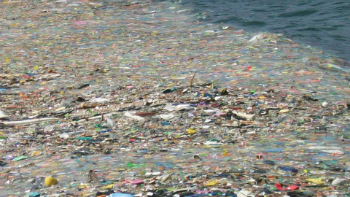
Imagine this, as far as the eye can see, covering an area larger than the state of Texas.
Highlights
Catholic Online (https://www.catholic.org)
8/3/2017 (8 years ago)
Published in Green
Keywords: South Pacific, garbage, patch, North Pacific, trash
LOS ANGELES, CA (California Network) -- A team of scientists has confirmed the existence of a massive garbage patch in the South Pacific. The patch appears to be the opposite of one found in the North Pacific in the 1980s.
The North Pacific patch, between California and Hawaii, was discovered by Charles Moore by accident as he sailed a racing yacht across the Pacific. He was stunned to find tiny pieces of plastic floating in the ocean, much farther than the eye could see.
Moore recently led a team of volunteer researchers to the South Pacific on a hunch that the ocean would also have a garbage patch. They were not disappointed.
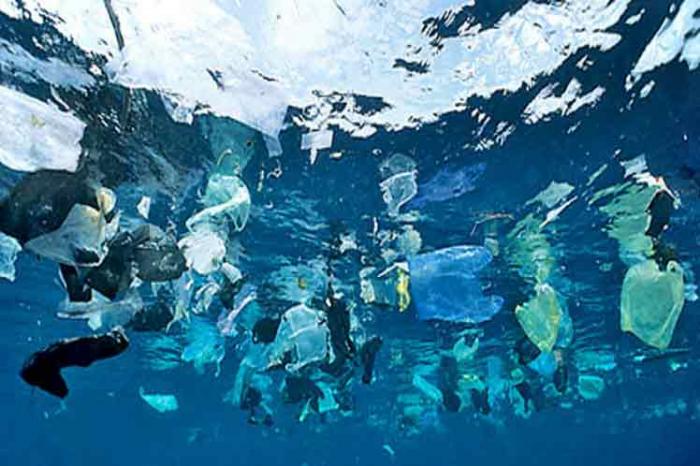
The oceans are filled with plastics.
The southern garbage patch is different in one way, the pieces of plastic are remarkably tiny, many the size of a grain or rice or smaller. However, they are plentiful. They cover an area at least as wide as a million square kilometers, about one-and-a-half times the size of Texas. It is also deep, although nobody is sure just how deep.
The plastic pollution in both patches accumulates over the years as the ocean currents circulate. The mechanism is the same as how something floating on the surface of a drink will gather at the center if the liquid is stirred.
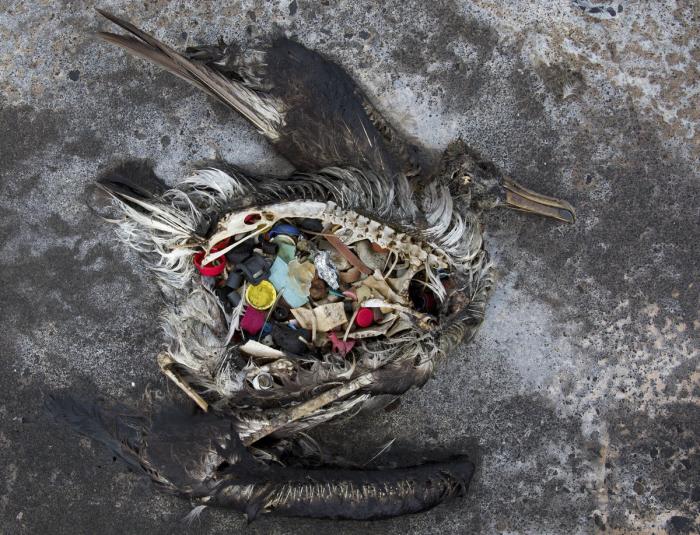
The remains of sea bird, killed by plastic ingestion.
The plastic is a serious problem. Not only does it serve as a rough measure of how polluted our planet is, it kills wildlife. Seabirds in particular are vulnerable to plastic pollution, sometimes swallowing the bits of plastic because they confuse them for food. Fish also do the same.
The plastic accumulates in the animals' stomachs, and becomes trapped in their bodies. Eventually, the animal dies from all the plastic stuck in their digestive tract. Smaller animals that swallow plastic are also eaten by larger animals which then get the plastic stuck in their stomachs.
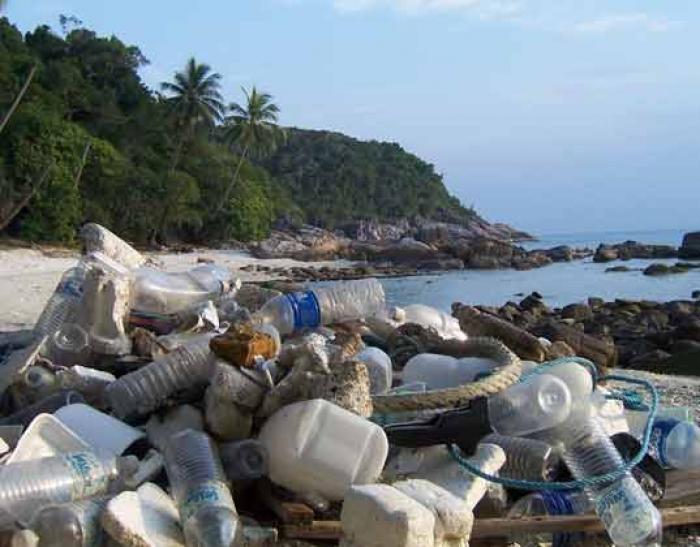
Plastic bottles piled on the beach. These are just a fraction that of the bottles that end up in the ocean from one beach, in the course of a day. Globally, the situation has reached crisis levels.
Plastic is cheap to produce and easy to mold. It is usually durable, so it can last in the environment for centuries. Plastic does not biodegrade. Instead, it breaks into smaller pieces over time, becoming fine like grains of sand. However, this process can take decades to hundreds of years, at a minimum. In the meantime, it can be ingested by animals and kill them.
Plastic is recyclable, but it is rarely collected. It is usually cheaper to produce new plastic than to recycle the old.
The plastic in the ocean is difficult, even impractical to remove. No plan has yet been developed to clean up the oceans. However, it is easier to prevent plastic pollution than to clean it up in the environment.
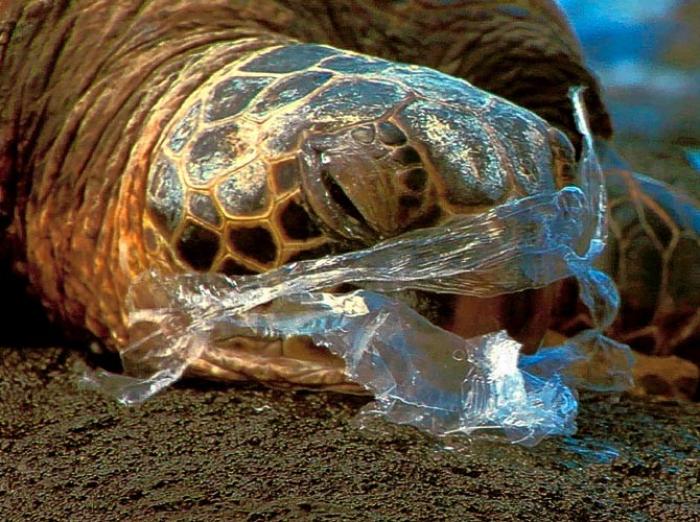
Plastic kills sea life, by strangling, choking, and blocking the consumption and digestion of food. Each day thousands of birds and fish starve to death due to plastic.
Plastic production should be curtailed and possibly phased out. Plastics should be designed to biodegrade in shorter periods of time. It should be thrown away separately and recycled. Otherwise, it should be banned in favor of more biodegradable substances.
Scientists now believe similar garbage patches should exist in the other oceans as well.
Subscribe Now - Catholic Online YouTube
---
'Help Give every Student and Teacher FREE resources for a world-class Moral Catholic Education'
Copyright 2021 - Distributed by Catholic Online
Join the Movement
When you sign up below, you don't just join an email list - you're joining an entire movement for Free world class Catholic education.
- Advent / Christmas
- 7 Morning Prayers
- Mysteries of the Rosary
- Litany of the Bl. Virgin Mary
- Popular Saints
- Popular Prayers
- Female Saints
- Saint Feast Days by Month
- Stations of the Cross
- St. Francis of Assisi
- St. Michael the Archangel
- The Apostles' Creed
- Unfailing Prayer to St. Anthony
- Pray the Rosary
![]()
Copyright 2025 Catholic Online. All materials contained on this site, whether written, audible or visual are the exclusive property of Catholic Online and are protected under U.S. and International copyright laws, © Copyright 2025 Catholic Online. Any unauthorized use, without prior written consent of Catholic Online is strictly forbidden and prohibited.
Catholic Online is a Project of Your Catholic Voice Foundation, a Not-for-Profit Corporation. Your Catholic Voice Foundation has been granted a recognition of tax exemption under Section 501(c)(3) of the Internal Revenue Code. Federal Tax Identification Number: 81-0596847. Your gift is tax-deductible as allowed by law.









